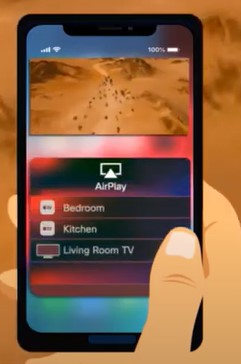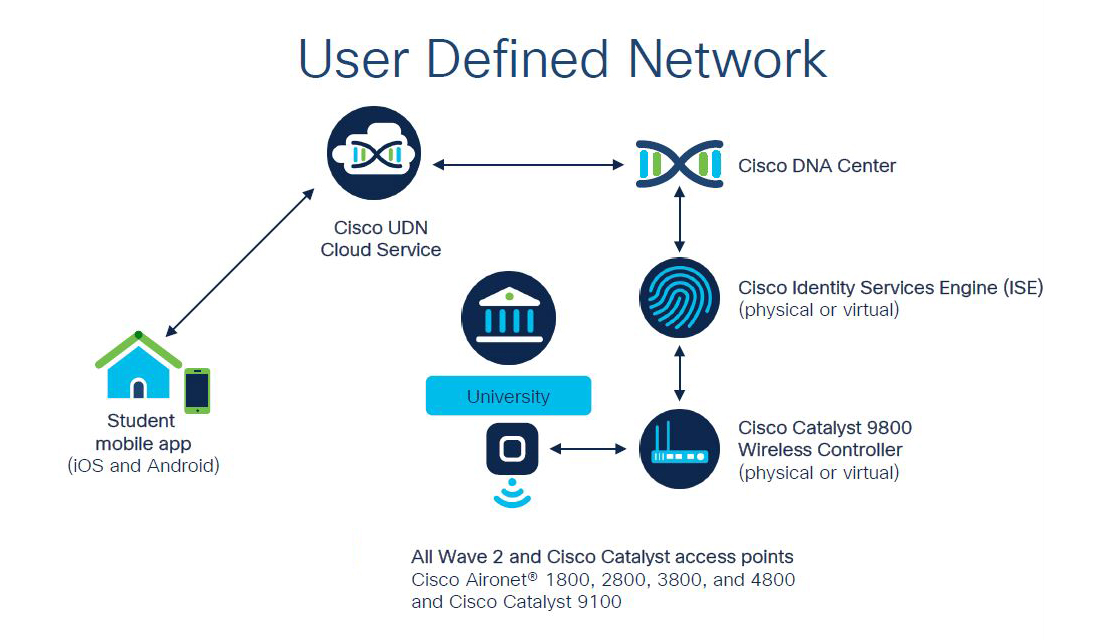- Best early Prime Day tablet deals: My 15 favorite sales live now
- Best early Prime Day robot vacuum deals: My 20 favorite sales live now
- How to Create Smarter Networks
- Publisher's Spotlight: NAKIVO Backup & Replication v11
- This high-tech eye massager is the only thing that helps my migraines, and it's 48% off
Cisco User Defined Network Simplifies Return to Campus Life – Cisco Blogs

Students love their gadgets. Mobile phones. Laptops and tablets. Smart TVs. Gaming consoles. And they bring them all on campus. Staff bring their devices, too. As many colleges and universities prepare for the return of in-person learning, IT managers are preparing for the coming chaos when “the surge” of devices hits their networks.
Everyone has become accustomed to a home-like Wi-Fi networking experience for their various wireless devices. On campus, students want to use a streaming technology, such as Google Chromecast or Apple Airplay, to watch movies and TV shows and print wirelessly. However, in a shared network environment, such as a school dormitory, it can be difficult to find a specific TV or printer among all of the other devices broadcasting on the Wi-Fi campus and dormitory networks.
As a result, students end up guessing which device might be theirs from a list without uniqueness or security. This can also cause confusion and annoyance as students accidently stream to devices owned by other students.
Cisco User Defined Network (UDN) solves this problem by segmenting students’ devices while they remain on the same SSID. This is accomplished by giving students and faculty their own private UDN, where only the devices they register can communicate with each other. This eliminates device naming confusion and creates a more secure network environment.
So How Does UDN Work?
 UDN, part of the Cisco DNA Center solution, helps IT managers conquer the device-onboarding blues. It does this by enabling a networking team to give each student and faculty oversight over their own network partition, which is segmented from others within the same domain. At the same time, it provides students with the simple, homelike Wi-Fi connectivity experience they expect.
UDN, part of the Cisco DNA Center solution, helps IT managers conquer the device-onboarding blues. It does this by enabling a networking team to give each student and faculty oversight over their own network partition, which is segmented from others within the same domain. At the same time, it provides students with the simple, homelike Wi-Fi connectivity experience they expect.
Students and staff automatically and securely connect and manage their own devices on the network via Android or iOS apps whether they are on- or off-campus. They do this by matching the appropriate Authorization Policy established by IT on Cisco Identity Services Engine (ISE), providing registered devices with immediate access to the campus network. From there, they can access their private network—and invite others to join as well. They can also remove any guest from their network with a touch of a button on their phone app.
With Cisco UDN, Network Administrators avoid the process of manually adding individual endpoints via a Cisco MyDevices solution, saving time and eliminating connection issues. It also provides security protection for the campus network by shrinking the attack surface and making it easier for the network administrators to contain or eliminate a threat.
The key capabilities of Cisco UDN are:
- Devices can be registered from any location—even before students leave home—via the Cisco User Defined Network app
- Simplified Day-One experience enables students and faculty to access their registered devices as soon as they arrive on campus
- Client 360 view provides detailed information on a User Defined Network
- Private network can be enabled on the location of choice
- Can contain broadcast, link local multicast, and unicast traffic—and all linked/scoped service discovery protocols
- Private network goes across multiple SSIDs and access methods
This means that the days of requiring a dedicated team of engineers to manage device registration, troubleshooting, and priority requests will soon be over. With Cisco DNA Center serving as the central point to control the network and security functions, university IT will be able to fully automate provisioning while gaining complete visibility into their User Defined Networks through the Client 360 view in Cisco Assurance.
Arkansas Tech University Chooses Cisco User Defined Network
Like many other campuses, Arkansas Tech University is preparing for students to return for in-person learning over the summer and into the fall. While the effects of COVID-19 require new safety protocols, the campus is also taking a more automated and secure approach to managing their network.
A cluster of Cisco DNA Center installations are already in place, which IT is using to manage the campus network consisting of Cisco Catalyst 9800 Wireless LAN Controllers and Wi-Fi 6 access points (APs). As a result, most of the day-to-day management functions are automated to maintain the performance levels their stakeholders expect.
They’re also working with Cisco on a User Defined Network rollout in three residence halls, which are equipped with Cisco Aironet 1815 APs and Catalyst 9000 APs. The goal is to consolidate numerous shared SSIDs into a unique User Defined Network instance to simplify the return of students to campus live with their numerous devices. After the initial rollout, the university expects to complete a product cutover for the 2021-22 school year.
So rather than being anxious about the return to in-person schooling, Arkansas Tech University says they’re looking forward to this new phase—thanks to Cisco UDN.
Perhaps your college or university will be next to implement User Defined Networks. Here’s everything you need to know:
Check out our Intent-Based Networking video channel.
Subscribe to the Networking blog
Share:


